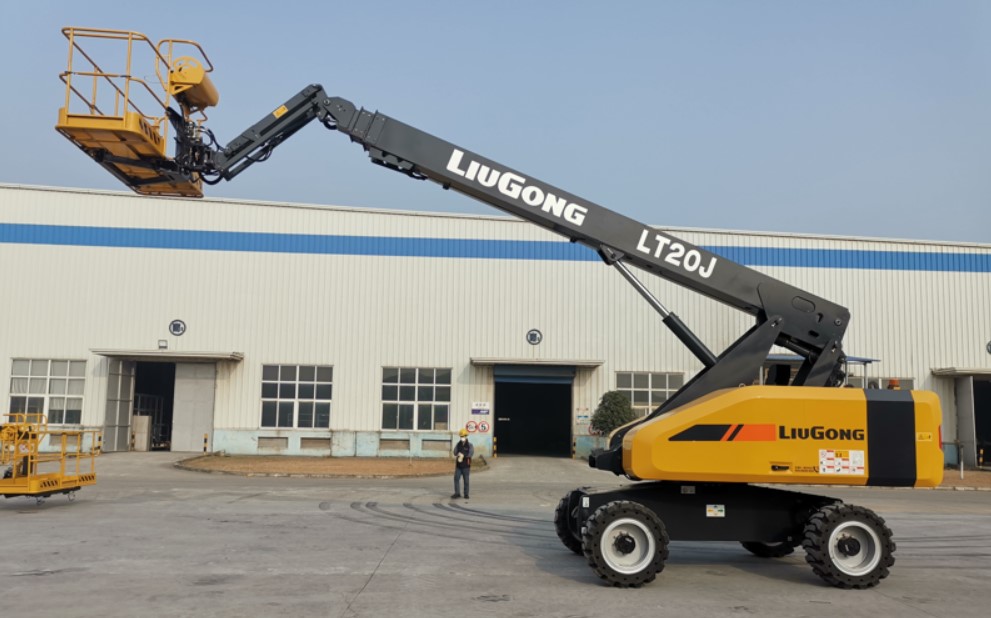When it comes to construction site safety, few things are as critical as ensuring the safe operation of Mobile Elevating Work Platforms (MEWPs). These machines are indispensable in the construction industry, allowing workers to perform tasks at height efficiently. However, without proper precautions, they can pose serious risks.
Whether you’re a business owner looking for an elevated work platform for sale or managing a team that uses mobile elevated work platforms, prioritising EWP safety is non-negotiable.
This guide outlines some key practices to ensure safety on construction sites while using EWPs.
Understanding Elevated Work Platforms
A Mobile Elevating Work Platform (MEWP) is designed to lift workers, tools, and materials to elevated heights, enabling tasks to be performed safely at heights. MEWPs are widely used on construction sites, where workers need to reach hard-to-access areas, such as roofs, ceilings, or elevated structures.
EWPs are often preferred over traditional methods, such as ladders and scaffolding, because they provide a stable, enclosed space for workers, and enable work to be done without climbing thereby reducing the risk of falls.
Types of Elevated Work Platforms Used in Construction
-
Boom Lifts
Boom lifts are a type of EWP with a hydraulic boom that can extend and retract. This allows for precise positioning, making them ideal for tasks that require both horizontal outreach and vertical height. They are often used for exterior maintenance, electrical work, and window cleaning.
-
Scissor Lifts
Scissor lifts are platforms that rise vertically, perfect for tasks that require workers to stay in one position, such as installing lighting fixtures or working on suspended ceilings. These are often used indoors because they have a smaller footprint, making them ideal for narrow or confined spaces.
-
Vertical Mast Lifts
Vertical mast lifts are a compact, lightweight option for working at heights. They are typically found in areas with limited space, such as warehouse aisles, schools or small construction sites. They can be easily manoeuvred and are suitable for lighter tasks, such as inspections or light repairs.
-
Truck-mounted Lifts
Truck-mounted lifts are EWPs mounted on vehicles, offering the flexibility to move from one location to another. These vehicle mounted elevated work platforms are ideal for large construction projects and where very high access is required, such as wind turbines.
Legal and Regulatory Requirements
In Australia, each state and territory has specific safety laws that employers must follow when using elevated work platforms. For example, EWP operators must hold a valid EWP license or certificate. This ensures that they have the necessary skills and knowledge to operate the equipment safely. Work above 11 meters platform height will require a High Risk Work License, while work below 11 meters will require a EWPA Yellow Card. In both cases the operator of an MEWP will also require a Verification of Competency (VOC) to ensure they are competent to operate the equipment.
Employers are responsible for providing a safe working environment and ensuring that all MEWP equipment is in proper working condition. This includes ensuring that material-lifting equipment is regularly maintained and serviced and that operators receive appropriate training.
Pre-Operational Safety Checklist
Before any work begins, it is essential to conduct a thorough inspection of the equipment and working conditions. This includes:
- Inspect the Equipment: Check for hydraulic leaks, tyre condition, missing or damaged components and control functionality, including emergency lower.
- Review Maintenance Logs: Ensure the machine has been serviced as per the manufacturer’s guidelines and there are no outstanding faults.
- Assess Ground Conditions: The area should be firm, level, and free of obstructions to prevent tipping or instability during operation. Do not set up on fresh soil or underground excavation such as a trench. Set up away from retaining walls at least the same distance as the height of the retaining wall.
- Test Safety Features: Verify emergency stop buttons, guardrails, horn and harness points.
Operator Training and Competency
Proper operator training is essential to maintaining elevated work platform safety. This covers all aspects, including equipment setup, operation, and emergency procedures. They must also understand load capacities and machine limitations.
Refresher courses should be conducted regularly to keep skills sharp and up-to-date with new safety standards. Employers should periodically assess operator competency to ensure that they are confident and competent in using the EWP safely.
Wearing the Right Personal Protective Equipment
Height safety on construction sites is critical when using EWPS, and proper personal protective equipment (PPE) is essential. Workers should wear hard hats, high-visibility clothing, and non-slip footwear. When using boom lifts, fall protection systems such as harnesses, lanyards, and guardrails should be used.
It’s vital to inspect the PPE periodically to check its condition and replace it if necessary. Fall protection systems should be properly fitted and maintained to provide maximum protection in case of a fall.
Safe Operating Procedures
Follow these construction equipment safety tips for safe EWP operation and reduce the risk of accidents:
- Stabilise the Platform: Correctly deploy outriggers if fitted.
- Respect Load Limits: Overloading can cause tipping or mechanical failure.
- Maintain Three Points of Contact: Ensures balance when entering and exiting the platform.
- Avoid Overreaching: Reposition the EWP instead of leaning out.
- Do not override any safety features: Limit and proximity switches must not be tampered with.
- Be aware of your working area: Power lines, traffic, bystanders all need to be accounted for in a Take5 assessment.
Working at Night or in Low Visibility Conditions
Operating elevating work platforms at night or in low visibility conditions requires extra precautions.
- Use Proper Lighting: Equip the site with a light tower for sale to ensure visibility.
- Mark Hazard Zones: Clearly outline safe and restricted areas.
- Increase Supervision: Assign a spotter to guide operators in low-light conditions.
- Be Aware of others: Ensure you are able to be seen by the public, such as vehicles.
Conclusion
Prioritising elevated work platform safety is crucial for protecting workers and maintaining productivity on construction sites. From selecting the right mobile elevated work platform and adhering to legal requirements to conducting thorough pre-operational checks and ensuring proper training and PPE, every step matters.
If you’re searching for an elevated work platform for sale or need additional equipment, such as site vans for sale in Australia, trust Access Service Australia to provide you with top-quality equipment.
Call 1300 272 111 to discuss your construction equipment needs.

